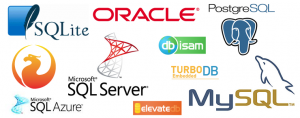
Find Out Everything You Need To Know About Databases.
Many people, who’ve had the chance to study, develop or use databases, will all agree to the fact that these systems have grown to become some of the most vital parts of most institutions, businesses, schools or any other field that deals with record keeping. In fact, taking a look at the technological wave that hit the world during the 20th century, one might come to the conclusion that databases were revolutionary ripples that made the technological wave even better than it was. Below is an outline on everything you need to know about databases.
What is a Database?
In simple terms, Databases are systems used to store, manipulate and manage data and information. In most cases, these systems deal with the structure of data and information, both compiled into an efficient and useful form. Database Management Systems (DBMSs) are used in many aspects of life and in many fields. They can be used to store website data, company records, patient information in hospitals, students’ performance data in schools and so on. Basically, DBMSs come into play when you need to store data and information in digital form. Many companies and institutions greatly use DBMSs to store and offer both online and offline services.
If you’ve always wondered how banks make it possible for you to access your financial accounts from an ATM in any part of the country, then you should know that databases play a critical role in the whole process. Truthfully speaking, databases are usually the backbone behind all the convenience, flexibility and efficiency that comes with accessing financial, medical, and educational services.
The History of Databases

The first Databases were created during the early stages of computerized advancements. This was during the 1960s which saw the creation of the first DBMSs – the IMS system from IBM and the CODASYL – that both relied on the navigational data models approach. After a decade of improvements and advancements, the first relational database model was proposed by Edgar Codd in 1970. The relational model gained popularity because it was easy, efficient and convenient to use.
A decade after Edgar’s proposal, relational databases had grown to be the most dominant types of DBMSs. In fact, we still rely heavily on relational databases today. Common DBMSs include MySQL, Oracle, Microsoft SQL Server, IBM DB2 with the dominant DBMS language being standardized SQL (Server Query Language).
There are some other well-known generation of databases like the NoSQL DBMSs (that introduced document-oriented databases and fast key-value stores) and the next generation database – the NewSQL databases ( they are a merger between the revolutionary relational/SQL model and the high-performance NoSQL models).
Types of Databases
There are 5 main categories of DBMSs namely; relational databases, operational databases, database warehouses, distributed databases, and end-user databases. Below is a brief explanation of each;
* Distributed Databases
These systems are mostly common in organization and institutions that have many office locations spread across a large geographical area. In most cases, each office location in a big institution may have their own DBMS, but these distributed databases are usually combined to form the organization main DBMS. That’s why it is usually referred to as a distributed database.
* Operational Databases
As the name suggests, these DBMSs are usually used to store an organization’s day to day transaction and operational data. These databases are also called transaction databases or subject-area databases (SADB) or production databases. These DBMSs are usually critical to most organizations because they also store client information, personal data, inventory data as well as transaction details. The data stored in these systems can be manipulated or changed to suit the company’s operational needs.
* End-User Databases
These are small DBMSs that are usually accessible to the end users of any company from a workstation. They may be in the form of spreadsheets, word files, PowerPoint presentations, notepads and even downloaded files.
* Database Warehouses
These are mostly massive databases that have been uniquely designed to store years of relevant data and information. These data is used by organizations for analysis and comparisons for them to come up with trade patterns, trends, customer behavior, and overall company progress among other things. All these relevant data and information is collected over the years and stored in a database warehouse for future reference.
* Lastly, Relational Databases
These are the most common types of DBMSs in use today. Their fame is attributed to their ease and simplicity during use. They store data using tables. Each data table usually has a unique field used to relate it to other tables in the database. That’s why these systems are usually referred to as relational databases. Good examples of relational databases include Oracle, MySQL, Sybase and Microsoft SQL and they are mostly used in projects, system and software development.
The Future of Databases
In light of the fact that today’s technology advances with every passing second, it would be hard to predict how tomorrow’s databases will look like. But one thing is for sure, they will be better that today’s databases in terms of convenience, accessibility, functionality, storage and methodology. We’ll just have to wait and see where it goes.
